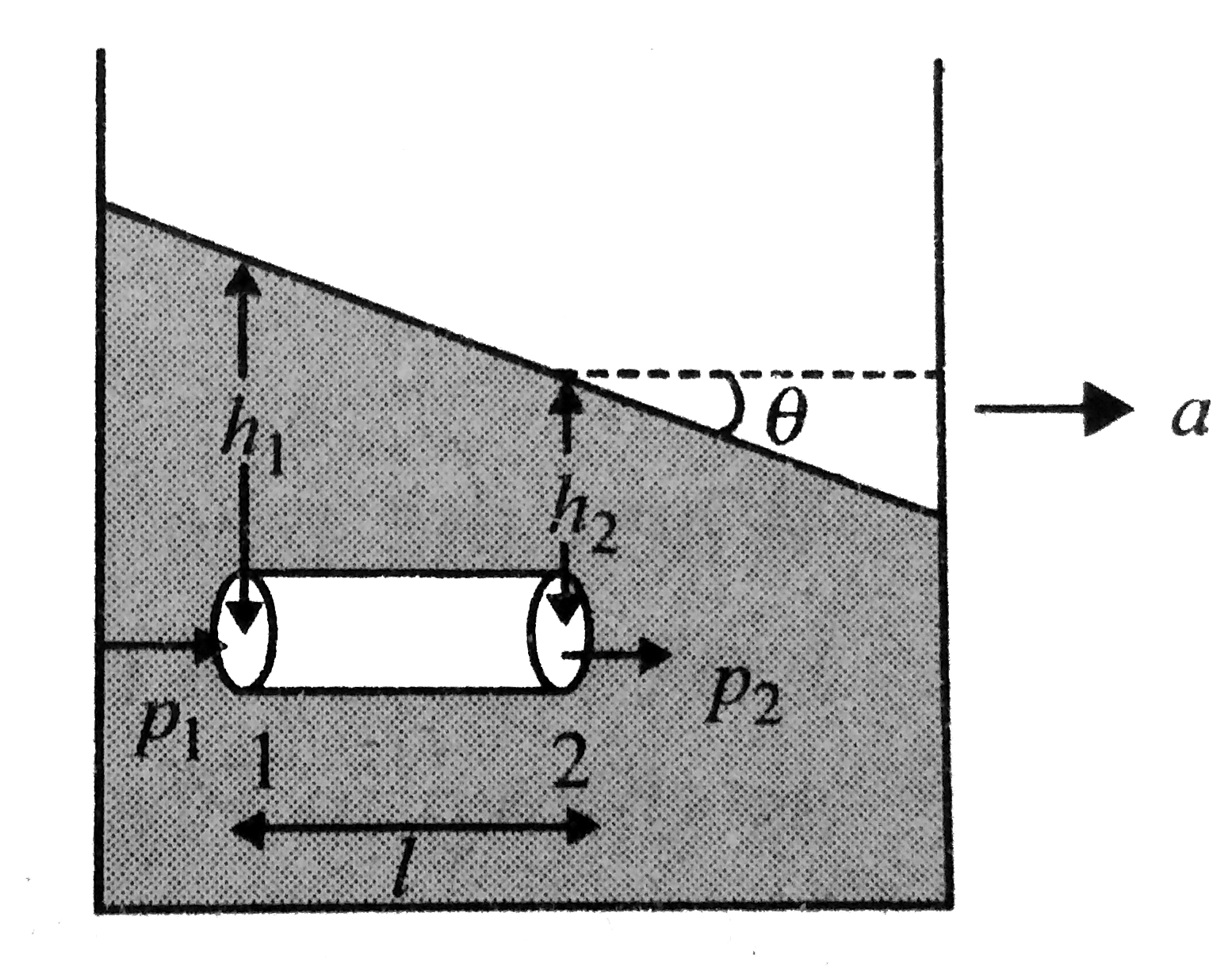An open vessel containing liquid is moving with constant acceleration a on a levelled horizontal surface. For this situation mark out the correct statement(s).

A
The maximum pressure is at the leftmost bottom corner.
B
Along a horizontal line within the liquid as we move from left to right the pressure decreases.
C
The pressure at all points on a line making an angle a of tan−1(ag) with horizontal would be same.
D
Along a horizontal line within the liquid as we more from left to right, the pressure remains same.
Video Solution
Text Solution
The correct Answer is:A, B, C
Pressure decreases in the directionof acceleration. If we take two points 1 and 2, two points in the horizontal line, then we can write p1−p2=ρal.
As the inclination of liquid surface with tanθ=ag. The equipressure lines will be paralel to this line.

|
Updated on:21/07/2023
Topper's Solved these Questions
- BOOK - CENGAGE PHYSICSCHAPTER - FLUID MECHANICSEXERCISE - Multipe Correct15videos
FLUID MECHANICS
- BOOK - CENGAGE PHYSICSCHAPTER - FLUID MECHANICSEXERCISE - Assertion-Reasoning8videos
FLUID MECHANICS
- BOOK - CENGAGE PHYSICSCHAPTER - FLUID MECHANICSEXERCISE - Subjective25videos
FLUID MECHANICS
- BOOK - CENGAGE PHYSICSCHAPTER - DIMENSIONS & MEASUREMENTEXERCISE - Integer2videos
DIMENSIONS & MEASUREMENT
- BOOK - CENGAGE PHYSICSCHAPTER - GRAVITATIONEXERCISE - INTEGER_TYPE1videos
GRAVITATION
Similar Questions
Knowledge Check
- Question 1 - Select One or More
Mark out the correct statements(s).
AHigher binding energy per nucleon means thenucleus is more stable.BIf the binding energy of nucleus were zero, thenit would spontaneously break apart.CBinding energy of a nucleus can be negativeDBinding energy of a nucleus is always positive - Question 2 - Select One or More
Mark the correct statement(s).
A(a) The work-energy theorem is valid only for particlesB(b) The work-energy theorem is an invariant law of physics.C(c) The work-energy theorem is valid only in inertial frames of reference.D(d) The work-energy theorem can be applied in non-inertial frames of reference too. - Question 3 - Select One or More
Mark the correct statement(s).
A(a) Total work done by internal forces of a system on the system is always zero.B(b) Total work done by internal forces of a system on the system is sometimes zero.C(c) Total work done by internal forces acting between the particles of a rigid body is always zero.D(d) Total work done by internal forces acting between the particles of a rigid body is sometimes zero.

